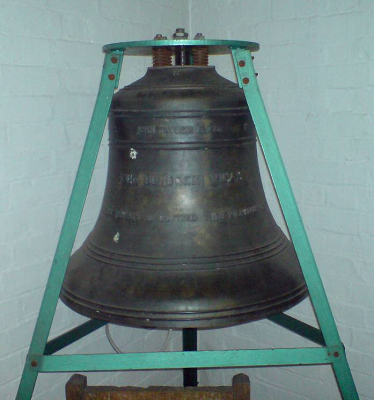The full reference for this paper is:
Perrin R., Charnley T., DePont J., “Normal Modes of the Modern English
Church Bell”, Journal of Sound and Vibration 90(1), pp29-49 (1983)
It is reprinted in Rossing’s ‘Acoustics of Bells’.
The work is certainly the most comprehensive investigation into the modes of vibration of a bell. Over a period of years they identified 134 modes of vibration in a bell provided by Taylor’s bellfoundry, measuring the frequencies and identifying nodal meridians and circles using electronic stimulators and sensors attached to the bell. To assist in the analysis, DePont built a computer model of the bell using finite element analysis which was used to confirm the vibrational characteristics of modes already investigated and predict the existence of others still to be found.
What was not considered in the work was the acoustical significance of the many modes of vibration; which are prominent in the sound of the bell, and which contribute to the overall effect on our ears. In my PhD research (pages 90 onwards in the thesis) I present a detailed reconciliation of the partials measured in a recording of the bell, the results of Perrin, Charnley and DePont’s experiments and classification scheme, and André Lehr’s classification scheme in his 1965 paper.
The bell used in the experiments is preserved in the museum at Taylor’s bellfoundry in Loughborough, still suspended from the frame described in the paper. This was a bell originally cast for St Margaret’s, Leigh on Sea, Essex. I understand that the installation was delayed for some reason, and the bell was lent to Loughborough University for the experiments. When time came to deliver the bell to the parish, it couldn’t be found, so a replacement was cast. The bell was later found at the university and moved to the museum. Here is the bell:

Here is the text of the paper.